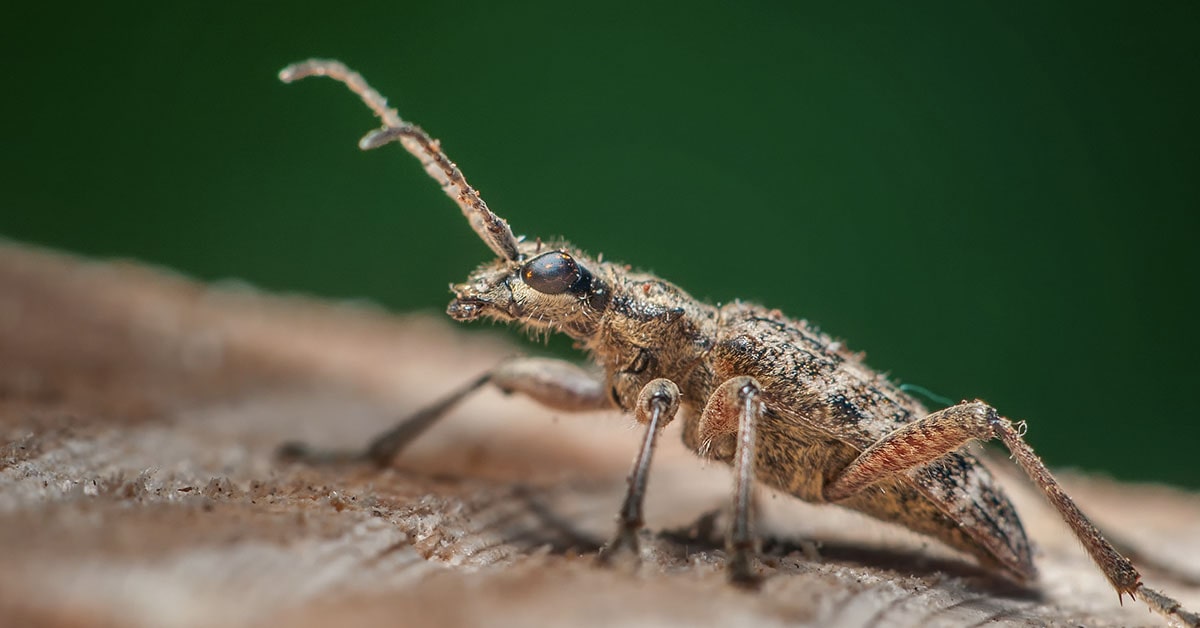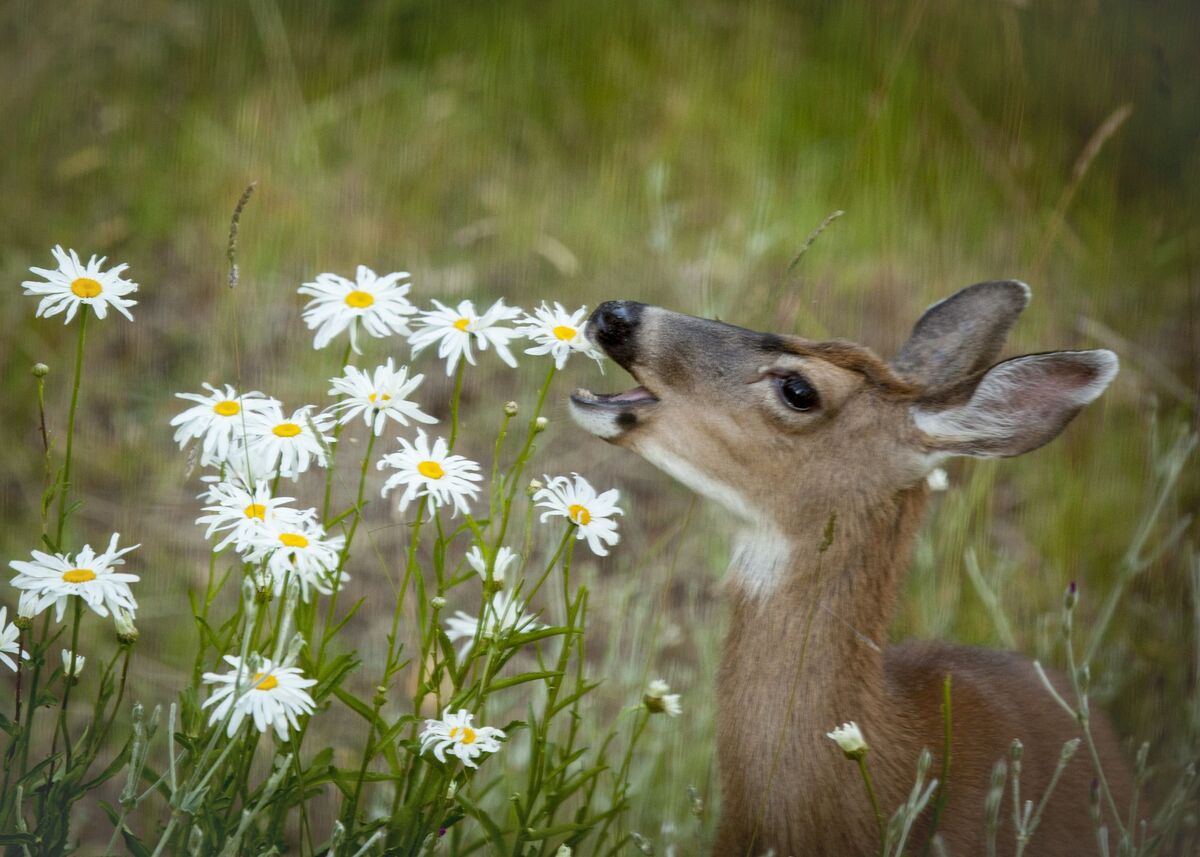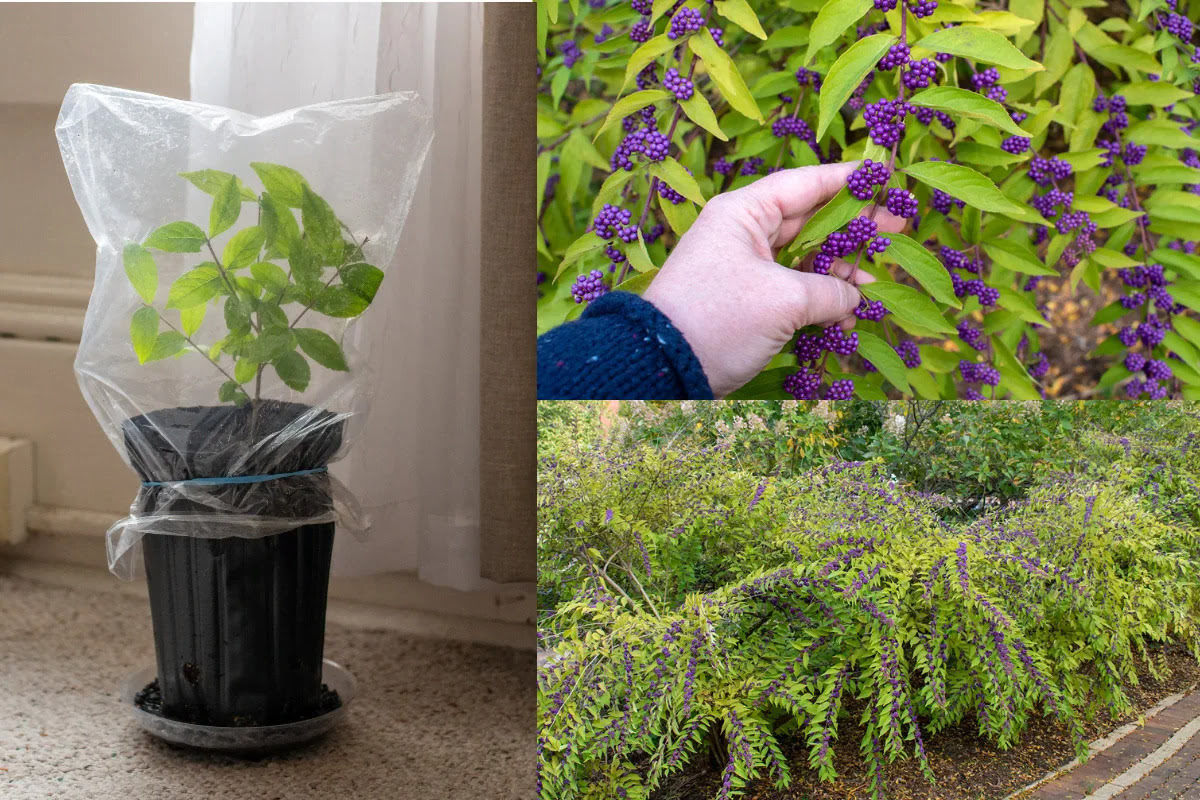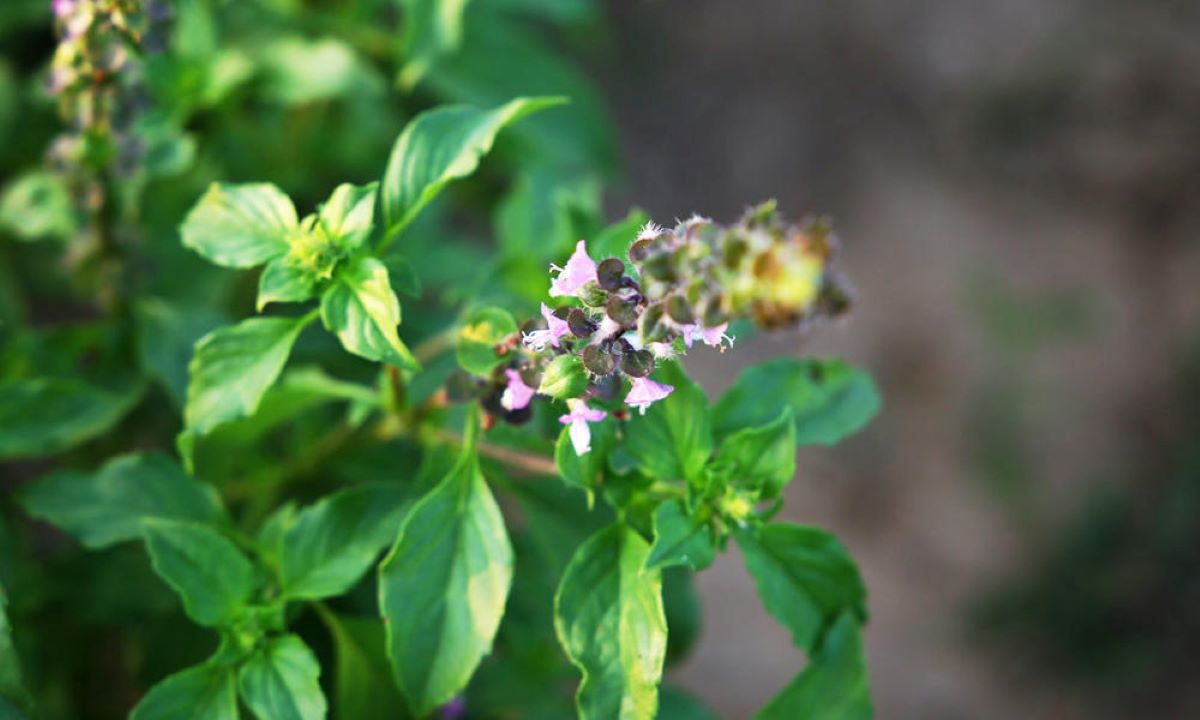Home>Gardening Techniques>Plant Care>How To Protect Shrubs From Deer
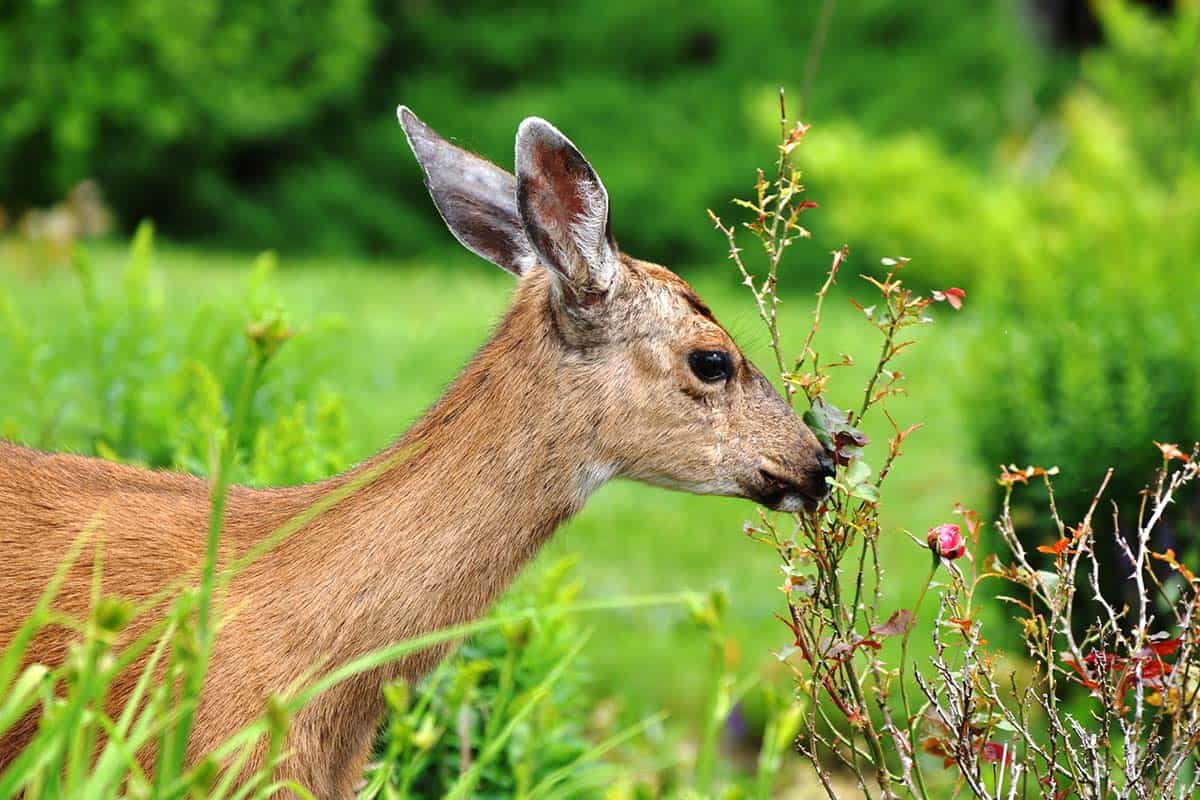

Plant Care
How To Protect Shrubs From Deer
Published: October 18, 2023
Learn effective plant care techniques to protect your shrubs from deer. Discover how to keep your plants safe and thriving with our expert tips and strategies.
(Many of the links in this article redirect to a specific reviewed product. Your purchase of these products through affiliate links helps to generate commission for Chicagolandgardening.com, at no extra cost. Learn more)
Table of Contents
Introduction
Welcome to the world of plant care, where the beauty and health of shrubs are of utmost importance. However, there is a common challenge that every plant lover faces: deer. These graceful creatures may seem harmless, but their appetites can wreak havoc on your beloved shrubs. If you’ve ever woken up to find your precious plants devoured overnight, fear not! In this article, we will explore effective strategies to protect your shrubs from deer and preserve their beauty.
Deer are herbivores known for their love of tender plant shoots and foliage. They can cause significant damage to shrubs by browsing on the leaves, twigs, and flowers, often leaving them looking ragged or even completely stripped. Understanding their behavior and the plants that are most attractive to them is crucial in devising a successful defense plan.
Deer are creatures of habit and tend to develop feeding patterns based on availability and accessibility. They are more likely to target plants that are located in close proximity to their habitat or along their established movement routes. Therefore, it’s essential to assess the surrounding environment and implement preventive measures accordingly.
In this article, we will discuss a range of techniques and measures to protect your shrubs from deer damage. We will explore natural and commercial deer repellents, the installation of deer fencing, the creation of physical barriers, scare tactics, the use of deer-resistant plants, as well as the importance of monitoring and maintaining protection measures. By implementing these strategies, you can create a deer-proof environment and ensure the well-being and longevity of your cherished shrubs.
Understanding the Behavior of Deer
In order to effectively protect your shrubs from deer, it’s important to have a good understanding of their behavior. By learning about their habits and patterns, you can develop strategies to deter them from damaging your plants.
Deer are creatures of habit and establish regular feeding routes. They often follow the same paths as they move throughout their territory, searching for food sources. Pay attention to any tracks or signs of browsing in your area to identify their movement patterns. By understanding where deer are most likely to come into contact with your shrubs, you can focus your protection efforts in those areas.
Deer are nocturnal animals, meaning they are active primarily during the night. They have excellent night vision, making it easier for them to navigate and find food under the cover of darkness. This is why many gardeners wake up to find their shrubs damaged overnight. However, it’s worth noting that deer can also be active during the dawn and dusk hours, known as crepuscular activity periods.
In addition to their feeding patterns, it’s essential to understand the plants that deer find most attractive. While deer have preferences, their tastes can vary depending on factors such as season, availability of food, and local plant diversity. However, in general, they tend to favor young, tender shoots and leaves. Some plants that are commonly targeted by deer include hostas, arborvitae, rhododendrons, and yews.
Another important aspect of deer behavior is their sense of smell. Deer have a highly developed sense of smell, and they use it to find food and detect danger. Understanding this can help guide your choice of deer repellents, as many of them rely on strong scents to deter deer from approaching.
By familiarizing yourself with the behavior of deer, you can take proactive measures to protect your shrubs. This understanding allows you to strategically position repellents and barriers, create an unfriendly environment for deer, and ultimately safeguard your plants from their appetites.
Identifying Common Shrub-Damaging Deer
When it comes to protecting your shrubs from deer, it’s important to be able to identify the specific deer species that are causing damage. By understanding the characteristics and behavior of the deer in your area, you can tailor your protection strategies accordingly.
There are several common deer species that are known to feed on shrubs and can cause significant damage to your plants. One of the most common deer species in North America is the white-tailed deer (Odocoileus virginianus). These deer are known for their white undersides and long, graceful tails that are raised when they are alarmed. White-tailed deer are highly adaptable and can be found in a variety of habitats, including both urban and rural areas.
Another deer species that can damage shrubs is the mule deer (Odocoileus hemionus). Mule deer are slightly larger than white-tailed deer and are named after their distinctive large ears, which resemble the ears of a mule. They are primarily found in the western parts of North America and have a preference for shrub vegetation.
Additionally, in some regions, you may encounter other deer species such as the black-tailed deer (a subspecies of mule deer), the elk, or the moose, which can also cause damage to shrubs. It’s important to identify which deer species are present in your area to develop appropriate protection measures.
One way to identify the deer species causing damage to your shrubs is by analyzing their feeding patterns. White-tailed deer tend to browse on the tips of shrubs and plants, leaving behind a characteristic jagged or torn appearance. They also tend to leave behind scat in small pellet form. Mule deer, on the other hand, browse more selectively and may create a more uniform eating pattern on the shrub leaves.
Observing the behavior and physical characteristics of the deer in your area can also help you determine the species. Pay attention to their size, coloration, and any distinguishing physical features. Consulting with local wildlife experts or extension services can provide valuable insights into the specific deer species present in your region.
By accurately identifying the deer species causing damage to your shrubs, you can develop targeted protection strategies to deter them and minimize the impact on your plants.
Natural Deer Repellents
When it comes to protecting your shrubs from deer, natural deer repellents can be an effective and eco-friendly solution. These repellents use scents and tastes that deter deer from approaching your plants. Here are some natural deer repellent options to consider:
1. Strong-Scented Plants: Incorporating strong-scented plants in your garden can help repel deer. Plants like lavender, sage, rosemary, and marigolds emit fragrances that deer find unpleasant. Planting these alongside your shrubs can provide them with a natural barrier of protection.
2. Homemade Sprays: Homemade sprays made from common household ingredients can be an effective way to deter deer. The use of garlic, hot pepper, or soap solutions can create scents and tastes that deer find unappealing. Dilute these ingredients in water, and spray the mixture on and around your shrubs. Remember to reapply after rainfall or watering.
3. Predator Urine: The scent of predator urine, such as coyote or fox urine, can trigger a natural instinct in deer to avoid potential danger. Commercially available granules or liquids containing predator urine can be scattered around your shrubs to create the illusion of a predator nearby.
4. Blood Meal: Blood meal, a byproduct of animal processing, can act as a repellant for deer due to its strong scent. Sprinkle blood meal around the base of your shrubs or create a perimeter to deter deer from approaching.
5. Irish Spring Soap: Many gardeners have found success in using Irish Spring soap as a deer repellent. Simply hang bars of the soap near your shrubs or grate it and sprinkle the shavings around the plants. The strong scent is believed to deter deer from foraging.
It’s important to note that natural deer repellents may vary in effectiveness depending on the local deer population and the availability of alternative food sources. Additionally, some repellents may need to be reapplied periodically, especially after rain or watering, to maintain their efficacy. Regular monitoring of your shrubs is crucial to ensure the effectiveness of these natural deterrents.
While natural deer repellents can be an excellent first line of defense, it’s important to remember that deer are intelligent and adaptable creatures. As such, a combination of different repellents and protection strategies may be necessary to provide the most effective and long-lasting protection for your shrubs.
Commercial Deer Repellents
When it comes to protecting your shrubs from deer, commercial deer repellents offer a convenient and effective solution. These products are specially formulated to deter deer from approaching your plants and are readily available in garden centers or online. Here are some popular types of commercial deer repellents:
1. Liquid Sprays: Liquid deer repellents are applied directly to the shrubs and have both scent and taste deterrents. They often contain ingredients such as putrescent egg solids, garlic, and other natural substances that are unpleasant to deer. These sprays form a protective barrier on the shrubs and need to be reapplied after rainfall or watering.
2. Granular Repellents: Granular deer repellents are applied around the base of the shrubs and create a scent barrier that deters deer from approaching. The granules slowly release an odor that is unappealing to deer. These repellents are easy to apply and provide long-lasting protection, usually lasting several weeks before needing to be reapplied.
3. Motion-Activated Sprinklers: Motion-activated sprinkler systems use a combination of water and noise to startle deer and scare them away. These devices detect the movement of deer and release a burst of water, creating a deterrent effect. Motion-activated sprinklers are effective at deterring deer from entering specific areas of your garden and can be particularly useful if you have a large area to protect.
4. Deer-Resistant Plant Coatings: There are commercial sprays available that can be applied to the leaves of shrubs to make them taste unpleasant to deer. These coatings are invisible and won’t harm the plants but can discourage deer from browsing on them. They need to be reapplied every few weeks or after rainfall.
5. Ultrasonic Devices: Ultrasonic devices emit high-frequency sounds that are not audible to humans but can be irritating to deer. These devices can be placed near your shrubs and create an invisible barrier that repels deer. However, it’s important to note that their effectiveness can vary, and deer may become accustomed to the sound over time.
When using commercial deer repellents, it’s important to follow the instructions provided by the manufacturer for optimal results. Remember to reapply as recommended and monitor the effectiveness of the repellents regularly. While commercial deer repellents can be effective, it’s important to use them in conjunction with other protective measures to create a comprehensive deer protection strategy for your shrubs.
Installing Deer Fencing
One of the most effective ways to protect your shrubs from deer damage is by installing deer fencing. Fencing creates a physical barrier that prevents deer from accessing your plants. Here are some important considerations when installing deer fencing:
1. Height and Material: Deer fencing should be at least 8 feet tall to effectively deter deer from jumping over it. The material of the fence plays a crucial role as well. Opt for sturdy materials such as metal or polypropylene mesh that can withstand deer pressure. Make sure the gaps in the mesh are small enough to prevent deer from squeezing through.
2. Depth: To prevent deer from burrowing under the fence, it’s important to bury the bottom edge of the fence several inches below ground level. This helps secure the fence and prevents deer from finding a way underneath it.
3. Clear Zone: Create a clear zone around the fence by removing any vegetation or debris that could provide deer with a platform to jump over. This ensures that the fence remains effective and provides an additional deterrent for deer.
4. Gate Placement: If you have gates in your deer fencing, make sure they are securely closed at all times. Deer are intelligent and can quickly figure out how to manipulate an improperly secured gate. Additionally, consider installing a smaller pedestrian gate alongside a larger vehicle gate to prevent deer from exploiting any gaps.
5. Maintenance: Regularly inspect the fence for any damage or weak points. Repair any holes, tears, or sagging sections promptly to ensure the fence remains effective in keeping deer out.
Before installing deer fencing, check with your local municipality or homeowners association for any regulations or permits that may be required. It’s also important to consider the aesthetic impact of the fence and how it will blend into your landscape. Many fencing options are available in various colors and styles to ensure it complements your garden design.
While deer fencing can be an effective barrier, it’s important to note that it may not be suitable for all types of landscapes or budgets. Additionally, large properties or areas with a high deer population may require substantial fencing materials and installation efforts. In such cases, focusing on specific areas or using fencing in combination with other protective measures may be a more practical approach.
By installing deer fencing, you can create a physical barrier that effectively prevents deer from accessing your shrubs and ensures their protection and longevity.
Creating Physical Barriers
Creating physical barriers is another effective strategy for protecting your shrubs from deer. These barriers physically prevent deer from coming into contact with your plants and can be customized to suit your specific needs. Here are some physical barrier options to consider:
1. Individual Plant Protection: For smaller shrubs or individual plants that are particularly susceptible to deer browsing, you can create individual protective covers. These covers can be made from materials such as wire mesh, chicken wire, or plastic netting. Simply construct a frame around the shrub and cover it with the desired material, ensuring that there is enough space for the shrub to grow within the enclosure.
2. Tree Trunk Protection: Deer not only browse on foliage but may also damage the bark of young trees by rubbing against them. Use tree trunk protectors made of sturdy materials such as plastic or metal. These protectors wrap around the base of the tree and shield it from deer antlers or rubbing damage.
3. Foliage Netting: Foliage netting is a lightweight and cost-effective solution to protect larger areas with multiple shrubs. It is typically made of plastic netting that can be draped over the plants and secured with stakes or ties. Ensure that the netting is taut and has a height of at least 6 feet to prevent deer from reaching the shrubs.
4. Hedgerows or Barriers: Planting dense and thorny shrubs around the perimeter of your garden or shrub beds can act as a natural physical barrier. This discourages deer from entering the protected area as they are less likely to push through or jump over these barriers.
5. Raised Beds: Another option is to create raised beds for your shrubs. By elevating the soil level, you can make it more challenging for deer to access the plants. Combined with other protective measures such as netting or fencing, raised beds can provide effective protection for your shrubs.
When choosing a physical barrier, consider the specific needs of your shrubs and the overall aesthetics of your garden. Ensure that any materials used are sturdy and can withstand deer pressure. Regularly inspect and maintain the barriers to address any damage or weak spots.
While physical barriers can be highly effective, it’s important to note that they may require more effort to install and maintain compared to other methods. Additionally, consider the size of the area you need to protect and the number of shrubs involved, as this may impact the feasibility of using physical barriers as the sole method of defense.
By creating physical barriers, you can directly protect your shrubs from deer browsing and ensure their continued health and beauty.
Implementing Scare Tactics
Scare tactics can be an effective way to deter deer from approaching your shrubs. By creating an environment that appears threatening or unpredictable to deer, you can discourage them from venturing into your garden. Here are some scare tactics to consider:
1. Visual Deterrents: Visual deterrents aim to startle or confuse deer by creating unexpected or unfamiliar sights. Hanging shiny objects such as aluminum foil strips, old CDs, or reflective tape near your shrubs can create flashes of light that deter deer. Additionally, scarecrows or realistic predator decoys placed strategically can give the impression of potential danger and discourage deer from approaching.
2. Noise-Making Devices: Noise-making devices can startle deer and make them wary of your garden. Wind chimes, motion-activated alarms, or even radios tuned to talk stations can create unfamiliar sounds that deter deer. Remember to change the location or sound periodically to prevent deer from becoming acclimated to the noise.
3. Motion-Activated Lights: Motion-activated lights can startle deer when they detect movement in your garden. These lights can be placed strategically near your shrubs or along deer pathways to create a sudden burst of light that disorients the deer and makes them feel vulnerable.
4. Water Sprayers: Motion-activated water sprayers can provide an effective scare tactic for deterring deer. These devices sense deer movement and release a sudden spray of water, startling and discouraging them from approaching your shrubs. Make sure the sprayers cover the desired area without spraying non-targeted areas like walkways or neighboring gardens.
5. Scent Deterrents: Scent deterrents can mimic the presence of predators and discourage deer from approaching your shrubs. Products containing predator urine, such as coyote or wolf urine, can be applied around your garden as a scent deterrent. Commercially available predator scent repellents are also effective at creating a hostile environment that deer want to avoid.
Remember to change scare tactics periodically to prevent deer from becoming accustomed to them. Rotating between different visual deterrents, noise-making devices, and scent deterrents can help ensure their ongoing effectiveness.
While scare tactics can be effective, they may have limitations based on deer behavior and local deer populations. Additionally, scare tactics should be used in combination with other protective measures for optimal results.
Implementing scare tactics can help create an environment that is unattractive and intimidating to deer, ultimately safeguarding your shrubs from their browsing habits.
Using Deer-Resistant Plants
One of the most effective strategies for protecting your shrubs from deer is to choose and incorporate deer-resistant plants into your garden. These plants are naturally unappealing to deer due to their taste, scent, or texture. By selecting deer-resistant plants, you can reduce the likelihood of deer damage and maintain the beauty of your garden. Here are some tips for using deer-resistant plants:
1. Research Deer-Resistant Plants: Familiarize yourself with the various types of plants that are known to be deer-resistant in your region. These may include plants with strong fragrances, fuzzy or prickly leaves, or those that are unpalatable to deer. Consult local nurseries, garden centers, or online resources to find deer-resistant plants that thrive in your specific climate.
2. Diversify Your Plant Selection: Incorporate a variety of deer-resistant plants in your garden to create a less attractive environment for deer. By diversifying your plant selection, you make it less likely for deer to find a feast of their preferred plants and increase the chances that they will move on to other areas.
3. Focus on Native Plants: Native plants often have natural defenses against local pests, including deer. They have adapted to the local ecosystem over time and are more likely to be resistant to browsing. Consider including native plants in your garden and landscaping efforts.
4. Use Repellent Plants: Some plants have natural repellent properties that deter deer. For example, planting aromatic herbs like lavender, sage, or thyme can help mask the scent of more desirable plants, making your garden less appealing to deer. Incorporate these repellent plants strategically around your shrubs to provide an extra layer of protection.
5. Create a Buffer Zone: Plant deer-resistant plants as a barrier around more vulnerable shrubs. This acts as a buffer zone that makes it less likely for deer to venture further into your garden. The deer-resistant plants serve as a visual and olfactory deterrent.
While deer-resistant plants can significantly reduce the risk of deer damage, it’s important to note that no plant is completely “deer-proof.” In times of extreme hunger or scarcity of food, deer may still consume plants labeled as deer-resistant. Regular monitoring and adapting your protection strategies as needed are key to maintaining the health and well-being of your shrubs.
By incorporating deer-resistant plants into your garden, you can create a beautiful and sustainable landscape while minimizing the damage caused by deer browsing.
Monitoring and Maintaining Protection Measures
Protecting your shrubs from deer requires ongoing monitoring and maintenance to ensure the effectiveness of your chosen protection measures. By regularly assessing the condition of your plants and the success of your deterrent methods, you can make necessary adjustments and keep your shrubs safe. Here are some important aspects to consider when monitoring and maintaining your protection measures:
1. Regular Inspections: Regularly inspect your shrubs for any signs of deer damage. Look for browsing marks, torn leaves or twigs, trampled areas, or evidence of deer activity such as tracks or droppings. Early detection allows for prompt action to reinforce your protection measures.
2. Reapply Repellents: If you are using natural or commercial repellents, follow the instructions provided by the manufacturer for reapplication. Weather conditions can affect the longevity of repellents, so after rain or extensive watering, be sure to reapply the repellents to maintain their effectiveness.
3. Check Fencing and Barriers: Regularly inspect deer fencing and physical barriers to ensure their structural integrity. Repair any holes, tears, or weak points promptly to prevent deer from finding a way through or over the barriers. Ensure that gates are securely closed and latches are functioning properly.
4. Rotate Scare Tactics: Deer can become accustomed to repetitive scare tactics. Rotate between different visual deterrents, noise-making devices, or scent deterrents to prevent deer from getting used to them. Changing the location or sound of noise-making devices can help maintain their effectiveness.
5. Adjust Plant Choices: If you notice persistent deer damage on specific shrubs despite your efforts, consider replacing them with more deer-resistant alternatives. By adjusting your plant choices, you can better protect your garden and reduce the attractiveness of certain areas to deer.
6. Monitor Deer Behavior: Pay attention to changes in deer activity and behavior in your area. Deer populations can fluctuate, and their movements may change due to factors such as food availability or seasonality. Understanding their behavior can help you anticipate their feeding patterns and adjust your protection measures accordingly.
7. Explore Additional Strategies: If you find that your current protection measures are not fully effective, explore additional strategies such as combining repellents with physical barriers or installing motion-activated devices. Experiment with different methods to find the best combination of tactics for your specific garden and deer population.
Consistency is key when monitoring and maintaining your protection measures. Regularly assess the condition of your shrubs, reapply repellents as needed, and make necessary adjustments to ensure the ongoing effectiveness of your deer protection efforts.
By actively monitoring and maintaining your protection measures, you can successfully deter deer and preserve the health and beauty of your shrubs for years to come.
Conclusion
Protecting your shrubs from deer damage requires a comprehensive approach that combines various strategies and techniques. Understanding the behavior of deer, identifying common shrub-damaging deer species, and implementing effective protection measures are all key elements in preserving the beauty and health of your plants.
By utilizing natural deer repellents and commercial deterrents, you can create an unappealing environment for deer and discourage them from browsing on your shrubs. Installing deer fencing or creating physical barriers can provide a physical deterrent, while scare tactics can startle and ward off deer. Additionally, incorporating deer-resistant plants and regularly monitoring and maintaining your protection measures are important for long-term success.
It’s crucial to remember that there is no foolproof method for keeping deer away from your shrubs. Deer behavior and preferences can vary, and they may become accustomed to certain deterrents over time. Flexibility and adaptation in your protection strategies may be necessary to address changing circumstances.
By combining these strategies and tactics, you can effectively protect your shrubs and create a garden space that is less attractive to deer. It’s important to regularly assess the condition of your plants and make adjustments as needed to ensure ongoing protection. Patience and persistence are key, as successfully deterring deer requires a combination of effort, patience, and a deep understanding of their behavior.
Remember, protecting your shrubs from deer damage is a continuous process. With the right knowledge and consistent efforts, you can create a deer-resistant environment and enjoy the beauty of your shrubs for years to come.


